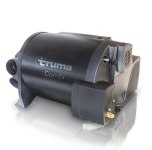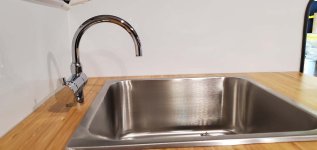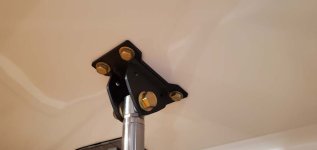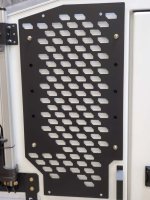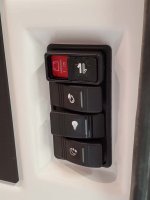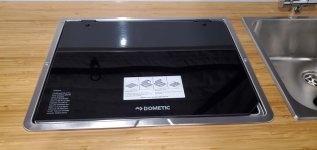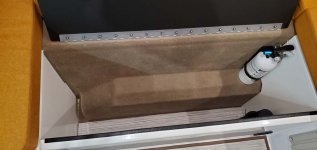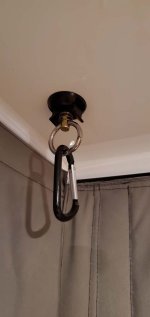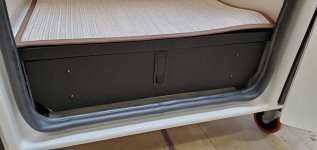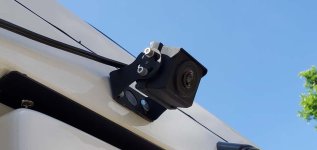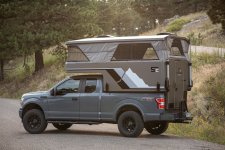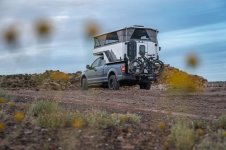Thought I'd start a new Supertramp Flagship LT Camper thread thread since the other threads were started when there was a fair bit of speculation and/or the specs were evolving where as now there are quite a few examples delivered and in the wild (50+ campers) . The Flagship LT model will continue to evolve, but the updates have slowed. Still, this is a moment-in-time and so all of the info below is subject to change, particularly when specific components/brands/models are mentioned.
The Supertramp Flagship LT camper overview/information is available on the Supertramp website https://www.supertrampcampers.com/ and there are a number of videos located on their Media page including a video from Scott Brady, Overland Journal, when he took one out for a night.
I've following Supertramp Campers since they debuted, but recently dug deeper into the details and wanted to share some of those deeper details and thoughts. These have been gathered through direct communication with Kelsey and Keith at Supertramp campers prior to, and during, a visit and tour of their facility but also from owners and my personal research on some of the individual components used in the current version (Truma, Dometic, Victron, etc.).

List of standard and optional equipment per the website (as of July 01, 2023):
Standard Features
ELECTRICAL
The Supertramp Flagship LT camper overview/information is available on the Supertramp website https://www.supertrampcampers.com/ and there are a number of videos located on their Media page including a video from Scott Brady, Overland Journal, when he took one out for a night.
I've following Supertramp Campers since they debuted, but recently dug deeper into the details and wanted to share some of those deeper details and thoughts. These have been gathered through direct communication with Kelsey and Keith at Supertramp campers prior to, and during, a visit and tour of their facility but also from owners and my personal research on some of the individual components used in the current version (Truma, Dometic, Victron, etc.).

List of standard and optional equipment per the website (as of July 01, 2023):
Standard Features
ELECTRICAL
- Four Lifting linear actuators with manual override
- Three 110W Flexible solar panels
- Two Maxxair Deluxe 7500K roof vent fans
- 12V, 100Ah BattleBorn Lithium battery
- 12V, 2.1A Dual USB ports
- 12V, 5A Dash socket
- Smoke Detector
- NOCO 10amp AC/DC converter (battery charger) Note: In late 2023, Supertramp has replaced the Noco 10amp with the Victron Energy Blue Smart IP67 12-Volt 17 amp charger as the standard battery charger in the camper.
- CO/Propane alarm
- Victron 30 amp DC/DC battery charger
- Victron MPPT Solar charge controller
- Victron SmartShunt
- 24 Gallon fresh water tank
- 5 Gallon gray water tank for sink
- Easy-access gray water drain hose
- Easy-access winter drain valve
- External water inlet
- Folding marine faucet
- 10’ Hose and Nozzle for interior/exterior shower
- Truma Combi on-demand water heater and cabin heater
- Queen-size bed
- 65L Isotherm fridge
- Two 11 lb Propane tanks
- Insulated pop-up fabric
- Rhino liner base with automotive paint finish
- Rear molle panel and L track now STANDARD
- Rear door window now STANDARD
- Portable cassette toilet
- Keyless Entry
- Reico Titan convertible jacks
- DC Air Conditioning
- Up to 400 Ah of lithium batteries
- Truma Combi Eco Plus (adds ability to run off shore power)
- Lagun table
- 1500W AC Inverter
- Additional 100Ah lithium batteries
- 42” Artic Tern window with integrated screen and shade
- Inside shower (curtain, drain, 5 gallon gray water tank)
- 23 Zero 180-Degree awning
- Outside shower enclosure
- Backup camera
- L tracks (various options for interior on side walls and celling, exterior one side walls)
- Molle panels
- 3M wrap
- Bunk bed
- Paint Color Options: Battleship Gray, Forest Green, or Sand Dune Tan
Last edited:


































